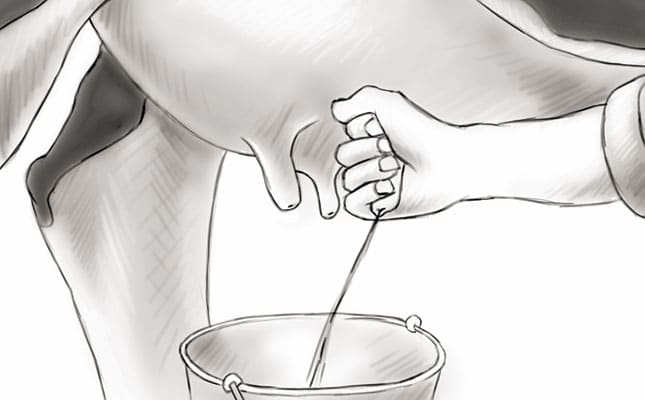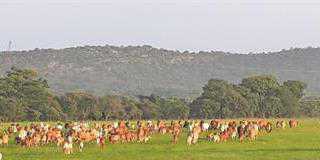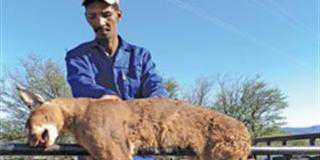
If the correct hand milking procedures are followed, cows will give more milk. Here are some tips on how to get the cleanest milk:
- Milkers must be clean, healthy and free of infectious diseases.
- Keep the cows’ hindquarters clear from manure and mud.
- Groom the cows regularly and remove loose hair and dirt that can fall into the pail during milking.
- Watch out for – and treat – signs of udder infection.
- Make sure that the cows are milked at regular intervals, if possible every 12 hours intervals, and by the same person. This pattern will get the cows used to the process, reduce stress and result in a successful dairy operation.
- Avoid noise in the dairy; it will have a negative effect on the release of milk.
- Always test the first milk that comes out for mastitis (ask your agricultural extension officer how to do this).
- Tie the cow’s hind legs and tail together so that the tail does not swish around.
- Wash dirty udders and teats by hand under running water. If they are clean, massage them for about one minute. Do not use a cloth to clean the udder and teats; a cloth is unhygienic and can cause problems such as mastitis.
- Wash your hands before milking. They should be moist but not dripping wet.
- Do not dip your hands into the milk because this can spread disease.
- Never use milk to lubricate the cow’s teats. Use milking salve if needed.
- Complete the milking in five to seven minutes because the cow will stop giving milk after that.
- Pour the milk into a container through a fine metal gauze strainer or muslin. Tie the muslin so that dirt cannot bypass it.
- Keep the milk refrigerated or in a cool place after milking.
- After milking, if the cow’s calf does not suckle, use a teat dip to prevent mastitis.

The top two diagrams show how not to milk a cow. The third indicates the correct way.
Source: infopak compiled by Directorate Agricultural Information Services, department of agriculture.












